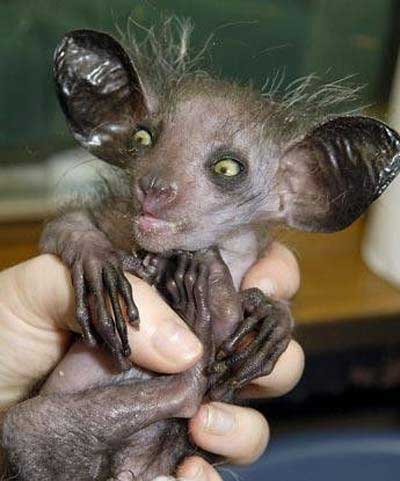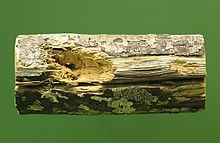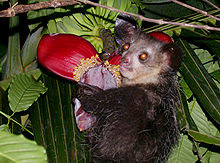
The Aye-aye is one of the Lemur species, and some say the most endangered. It is considered bad luck by local people and is often killed on sight. In the past the Aye-aye was protected by a local belief that anyone who harmed one would die within one year . But now, the belief has slowly died away making the Aye-aye very invulnnerable to humans.
The Aye-aye (Daubentonia madagascariensis) is a lemur, a strepsirrhine primate native to Madagascar that combines rodent-like teeth and a special thin middle finger to fill the same ecological niche as a woodpecker. It is the world’s largest nocturnal primate, and is characterized by its unusual method of finding food; it taps on trees to find grubs, then gnaws holes in the wood and inserts its elongated middle finger to pull the grubs out.
The Aye-aye has a body length of 36 to 44cm and a tail length of 50 to 60cm and weighs about 2kg. They are only found in the wild in Madagascar, throughout eastern, northern and northwestern Madagascar. It adapts itself to primary and secondary rain forest, deciduous forest, secondary growth, and dry scrub forest. It is also sometimes found in cultivated areas, particularly coconut groves. Aye-ayes are the size of a large cat. They have long, bushy tails and a shaggy brown coat. They sometimes also resemble rodents with a pair of enlarged front teeth , large eyes and huge bat-like ears.
The Aye-aye is an elusive and nocturnal animal, thus is hard to spot. The Aye-aye is also thought to be a solitary animal as individuals are most often recorded. Its need for large trees in which to build its daytime nests, makes it very vulnerable to deforestation. The Aye-aye is highly specialised for feeding on insect grubs excavated from rotting wood. Aye-ayes also eat fruits, principally coconuts, plant galls, adult insects and small vertebrates.
What is even more interesting is a comparison of the aye-aye with many of the woodpeckers. Many woodpeckers also employ percussive foraging, have special bills for chiselling, and possess very long, spiny tongues for extracting grubs. In other words, the aye-aye is a primate that occupies the niche of a woodpecker.
Via:wikipedia




